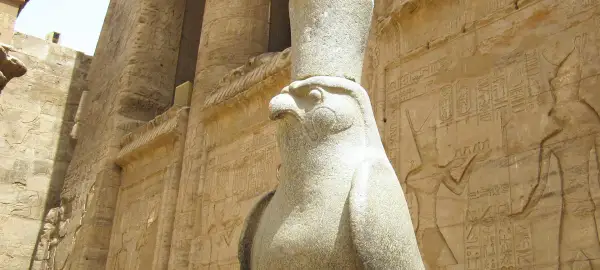- Overview
- Info & Inclusions
- Itinerary
- Map & Hotels
- Photos
- Dates & Prices
- Max Group Size 18
- Great Pyramids of Giza and Grand Egyptian Museum's treasures
- Valley of the Kings' hidden royal tombs
- Camel trek to St. Simeon's desert monastery
- Rose-red Petra through the dramatic Siq gorge
- Roman splendour at Jerash and Edfu
- Floating effortlessly in the mineral-rich Dead Sea
- Singles friendly (view options for single travellers)
A major highlight is Egypt's Nile Valley, a ribbon of green cutting through desert sands—featuring Luxor's magnificent Karnak Temple with its forest of columns, the hidden royal tombs of the Valley of the Kings where pharaohs sought eternity, and the colossal temples of Abu Simbel standing sentinel at Nubia's edge. We explore Cairo's Grand Egyptian Museum housing Tutankhamun's golden treasures, sail traditional feluccas on the Nile's timeless waters, and trek by camel to St. Simeon's monastery rising from desert sands.
The journey continues through Jordan's historic heartland, where we discover the extraordinarily preserved Roman city of Jerash with its columned streets echoing with chariot wheels, Mount Nebo's biblical vistas stretching across the Promised Land, and venture deep into Wadi Rum's otherworldly landscape of wind-carved sandstone where Lawrence of Arabia rallied Bedouin tribes. The tour concludes with Petra's dramatic approach through the narrow Siq gorge to reveal the Treasury's delicate façade carved from living rock, and a restorative finale floating effortlessly in the mineral-rich waters of the Dead Sea at Earth's lowest point—offering a richly rewarding journey through lands where pharaohs, prophets, and ancient traders left their indelible marks.
- Full-time Tour Leader services and local guide support at several locations.
- Breakfast and dinner are included daily (see day-by-day itinerary)
- All transport, accommodation, sightseeing and entrance fees for sites noted as 'visited' in the detailed itinerary.
- Gratuities for drivers, restaurant staff, porters, local guides.
- Airport transfers for travellers who are arriving/departing on tour dates and book their air through us
- Any early arriving/late departing travellers who book both their air and extra nights through us.
- International airfare to/from the tour.
- Tour Leader gratuities, most lunches, drinks, personal items (phone, laundry, etc), international (if applicable) and domestic air taxes, visa fees, and any excursions referenced as 'optional'.
- Airport transfers for Land Only customers.
- Optional trip cancellation insurance.
- Our post-reservation trip notes offer further guidance on shopping, not included meals, visas, locally-paid departure taxes.
- Seasonality and Weather:
Tours operate March through April, capturing Egypt and Jordan during their most pleasant season. Spring brings warm, sunny days with comfortable temperatures ideal for extensive outdoor exploration. Daytime conditions range from pleasant to warm, while evenings cool considerably, particularly in desert locations like Wadi Rum.
This timing avoids summer's extreme heat, when temperatures can exceed 40°C (104°F), making ancient site exploration exhausting. Spring also precedes the peak tourist season, ensuring more intimate experiences at major monuments. Occasional desert winds may stir sand, but rain remains rare. The Dead Sea's unique below-sea-level position creates consistently warm, therapeutic conditions year-round. - Transport and Travel Conditions:
This comprehensive tour involves considerable walking on uneven ancient surfaces, steep stone steps in tombs and temples, and sandy desert terrain. The camel trek to St. Simeon's Monastery suits most fitness levels, with truck transport available as an alternative. Petra requires several hours of walking on rocky paths with limited shade. The optional climb to the Monastery involves 750 steep steps. Valley of the Kings tombs feature narrow, dimly lit passages and steep staircases.
Modern, air-conditioned coaches handle road journeys between sites. Domestic flights connect Cairo with Aswan and Amman, minimizing long-distance driving. The pre-dawn Abu Simbel excursion involves six hours of desert driving but rewards with optimal photography light and crowd-free viewing.
We travel overland between Aswan and Luxor rather than by Nile cruise, allowing us to include additional sites beyond Kom Ombo and Edfu while enjoying private sightseeing instead of joining combined cruise ship groups. This independence lets us avoid peak crowds when ships dock simultaneously. Though Nile cruises hold romantic appeal, ships spend most time moored at docks in Luxor and Aswan, with actual sailing often occurring at night due to transit lock schedules. Our overland approach maximizes site access and touring flexibility while minimizing downtime.Though baggage handling is available throughout, you must still be able to fully manage yourself and your things, especially at airports.
Am I suitable for this tour? Please refer to our self-assessment form - Activity Level: 2
These are particularly busy tours that feature a lot of moving around, sometimes by train and short journeys on local transport. Walking tours of towns and cities are leisurely but you should be prepared to be on your feet for several hours. Some of our cultural trips that occur at high altitude and/or require greater independence with baggage handling (at hotels, airports, train stations) also fall into this category.
To learn more about the Activity levels, please visit our tour styles page. - Accommodation:
Hotels are clean, well-located, air-conditioned, 4-5 star. Some/most properties have outdoor swimming pools. Single rooms are limited in number and possibly smaller than twins.
Please click on the "Map & Hotels" tab for more information. - Staff and Support:
Tour Leader throughout, local drivers, local guides at various locations. - Group Size:
Maximum 18 plus Tour Leader
- Day 1:Arrive in CairoWelcome to Cairo, where the Nile's life-giving waters have sustained one of history's greatest civilisations for over five millennia. The city's Arabic name, Al-Qahira, means "The Vanquisher" - a fitting title for this sprawling metropolis of over 21 million souls.
As you transfer to the hotel, you enter a city nicknamed "The City of a Thousand Minarets" for its Islamic architectural splendour. Cairo has long served as the political and cultural heartbeat of the Arab world, where ancient stones stand alongside modern towers and where the calls to prayer echo across neighborhoods both wealthy and humble. Tonight we gather with fellow travellers for our first evening meal, beginning an extraordinary journey through lands where humanity first learned to build monuments for eternity.
Overnight in Cairo
Included Meal(s): Dinner, if required - Day 2:Cairo: Great Pyramids & the Sphinx - Grand Egyptian MuseumThis morning we stand before the Great Pyramids of Giza, one of humanity's most audacious architectural achievements. Over 100,000 labourers toiled for two decades to raise Cheops' eternal tomb 135 metres (443 feet) skyward using more than two million stone blocks, each weighing an average of 2.5 tonnes. The precision astounds - the base covers 5.3 hectares yet the sides vary by only 4 centimetres. You may venture inside through narrow passages to explore the inner chambers where pharaohs dreamed of immortality (optional, extra fee).
The enigmatic Sphinx crouches nearby, carved from a single limestone outcrop. For 4,500 years this lion-bodied, human-headed guardian has gazed across the desert toward the rising sun. Ancient Greeks named it after their mythical riddling monster - a fitting metaphor for a monument that still poses unanswered questions to archaeologists and visitors alike.
We then journey to the spectacular Grand Egyptian Museum, one of the world's largest archaeological museums. This architectural marvel houses over 100,000 artefacts spanning 7,000 years of civilization. We break for lunch at onsite restaurants before our guided exploration of the "Kingship and Eternity" galleries. The Hanging Obelisk soars overhead in the dramatic atrium, while the Colossal Statue of Ramesses II - weighing 83 tonnes - commands the grand staircase. Victory columns, sarcophagi, and treasures reveal the extraordinary sophistication of ancient Egyptian culture.
Our visit culminates with "Tutankhamun - The Immersive Exhibition," where state-of-the-art digital projections transport us through 3,400 years into the mesmerizing world of the boy king who died at just nineteen yet achieved immortality through his undisturbed tomb.
Overnight in Cairo (Giza).
Included Meal(s): Breakfast and Dinner - Day 3:Cairo: Dahshur, Memphis & SaqqaraWe journey south through fertile Nile Valley villages to Dahshur, where Pharaoh Senefru's experimental pyramids tell the story of architectural evolution. Built between 2613-2589 BCE, the Bent Pyramid and Red Pyramid represent crucial learning that made the Great Pyramid possible - the transition from stepped to smooth-sided design that would define Egypt's architectural legacy.
Next we visit Memphis, capital during the Old Kingdom (2700-2180 BCE), where colossal statues and artifacts reveal the grandeur of this ancient administrative centre. We continue to Saqqara's necropolis, dominated by the Step Pyramid - Egypt's oldest major stone building. Master architect Imhotep revolutionized tomb design in the 27th century BCE, stacking six levels until his creation soared 62 metres (203 feet) high.
We explore the mysterious Serapeum, where sacred Apis bulls associated with god Ptah were entombed. An avenue of sphinxes leads to underground corridors that once housed these mummified, revered creatures in massive stone sarcophagi - testament to the extraordinary role animals played in Egyptian religious life.
Overnight in Cairo (Giza).
Included Meal(s): Breakfast and Dinner - Day 4:Cairo - Fly to Aswan: The High Dam, Unfinished Obelisk & Philae TempleWe fly south to Aswan in Upper Egypt, Egypt's sunniest frontier town blessed with the Nile's most beautiful setting. Small enough to walk around yet steeped in ancient importance, Aswan's relaxed pace offers welcome respite after Cairo's intensity.
Our first stop is the High Dam, a modern marvel constructed between 1960 and 1971 to finally tame the Nile's annual flood. This massive engineering project created Lake Nasser, one of the world's largest artificial lakes. From this vantage point, panoramic views stretch north across Aswan's islands and palm groves, while southward the lake extends toward Africa's heart like a shimmering blue ribbon.
By boat we journey to dramatically situated Philae Temple on its island sanctuary. Dedicated to the goddess Isis, this relatively modest complex captivates through its stunning island setting and excellent preservation. The elegant colonnades and intricate hieroglyphic carvings tell stories of gods and pharaohs against the backdrop of Nile waters - creating one of Egypt's most romantic archaeological sites.
We conclude at the Unfinished Obelisk, where ancient stonemasons abandoned their work when cracks appeared during carving directly from bedrock. Had it been completed, this single piece of granite would have stood 42 metres tall and weighed nearly 1,200 tonnes. This remarkable quarry reveals ancient stone-working secrets - chisel marks and ochre-coloured guide-lines remain clearly visible after millennia.
NOTE: Sightseeing order in Upper Egypt may vary with flight schedules and weather. Your Tour Leader will advise of adjustments.
Overnight in Aswan.
Included Meal(s): Breakfast and Dinner - Day 5:Aswan: St. Simeon Monastery & Kitchener's IslandThis morning we cross the Nile by private boat to the west bank, where our unique adventure begins - a camel trek across sandy desert to the Christian Monastery of St. Simeon. Before mounting up, our Tour Leader and experienced camel handler teach proper riding techniques. This gentle 45-minute journey to the monastery (15 minutes return) suits travellers of any age, with one rider per camel creating an authentic desert experience. Those preferring not to ride can travel comfortably by truck.
Dating from the 6th century and actively used until the 13th century, St. Simeon's Monastery ranks among Egypt's best-preserved Christian sites. The massive mud-brick and stone structure rises dramatically against the desert landscape. We explore the atmospheric chapel where Coptic Christians once worshipped, wander through monks' living quarters imagining their austere daily life, and discover the kitchen, wine press, and storage rooms. Faint traces of Coptic frescoes still adorn some walls - ghostly images of Christ, saints, and geometric patterns that have survived centuries of desert winds.
Returning to the Nile, we cruise among the islands that dot this beautiful stretch of river. The elegant Mausoleum of the Aga Khan rises above the water in pink granite, built in 1957 for the spiritual leader of the Ismaili Muslims. The main island, Elephantine, earned its evocative name because riverside rocks resemble a herd of elephants bathing in the current. On enchanting Kitchener's Island, we stroll through lush botanical gardens bursting with exotic species collected from across the empire by the British general. Our day concludes with a leisurely felucca sail on one of these graceful traditional vessels, their white lateen sails catching the breeze as they've done for millennia.
Overnight in Aswan.
Included Meal(s): Breakfast and Dinner - Day 6:Aswan: Abu SimbelA pre-dawn departure by road (approximately 3 hours, each way) takes us south from Aswan across the Western Desert to Nubia, or the "Land of the Gold." Our destination this morning is the awe-inspiring Abu Simbel - the imposing rock temples of Ramesses II and his queen, Nefertari.
We have a guided tour of this site, including the interior of the colossal temples. The Temple of Ramesses II, with its immense statues of the Pharaoh seated on his throne, is one of the classic images of the power of the Pharaohs. Four 20-metre (65-foot) colossi flank the entrance, their weathered faces gazing across the desert with timeless authority. Inside the temple you will see well-preserved wall decorations and several murals. There is a wonderful relief of Ramesses presenting captives to various gods, including himself - demonstrating the pharaoh's divine status. We also gain insight into the reconstruction process by visiting the interior of the artificial mountain, where UNESCO's monumental 1960s relocation effort saved these temples from Lake Nasser's rising waters.
We return by road to Aswan in time for a late lunch. When visiting Abu Simbel we choose to travel by road instead of flying as the air schedules tend to be rather restrictive and do not always allow enough time at the site (much time is taken up by check-in, security, boarding, transferring etc). Driving frees us from this inconvenience and adds flexibility, plus allows us to see the High Dam en route. Departing very early ensures that we are at the site at the optimal time for photography; later in the morning, shadows fall across the temple making conditions less than ideal.
Overnight in Aswan.
Included Meal(s): Breakfast and Dinner - Day 7:Aswan - Luxor via Kom Ombo & EdfuWe farewell Aswan and journey north by road to Kom Ombo Temple, dramatically positioned on a promontory overlooking the Nile. In ancient times, Kom Ombo held strategic importance as a vital trading town on the caravan route from Nubia to Cairo. This unique temple is actually two sanctuaries in one, dedicated to both Horus the falcon-headed sky god and Sobek the crocodile deity. The dual design creates perfect symmetry - everything is doubled, from entrances to sanctuaries.
We see remains of mummified crocodiles, testament to when these fearsome creatures thrived in the Nile's waters and received worship as living gods. Today, crocodiles no longer inhabit Egypt's portion of the great river, but ancient reliefs and mummified specimens remind us of their once-sacred status.
From Kom Ombo we continue to Edfu, home to the largest and most completely preserved Pharaonic temple in Egypt, though ironically built by Greek rulers. Dedicated to Horus, construction began under Ptolemy III in 237 BCE and continued for nearly two centuries. We explore this massive complex enclosed by towering walls and flanked by enormous pylon gateways. Inside, we examine the fascinating Nilometer - an ingenious ancient device for measuring the river's water fluctuations. These measurements weren't merely academic; they determined tax levels, as higher floods meant better harvests and greater tax revenue for the state.
Overnight in Luxor.
Included Meal(s): Breakfast and Dinner - Day 8:Karnak Temple & Luxor TempleWe begin with magnificent Karnak Temple, built, enlarged, and decorated over 1,500 extraordinary years. At certain points in ancient history, this served as Egypt's most important religious complex, the beating heart of the kingdom's spiritual life. The tremendous pylon gateway looms before us, while the legendary Avenue of Sphinxes once stretched all the way to the Nile's edge. Inside, we tour the vast hypostyle hall where 134 massive columns soar skyward, their capitals supporting stone roofs that have endured three millennia. The scale demonstrates architectural ambition almost beyond comprehension.
After a break for lunch, evening brings us to Luxor Temple. Built during the New Kingdom, this complex served as focal point for the annual Opet Festival, one of ancient Egypt's most important celebrations. During this festival, priests paraded Amun's golden cult statue down the Nile from nearby Karnak Temple in elaborate boats, accompanied by music, dancing, and offerings. This fertility celebration reinforced the pharaoh's divine connection to the gods and brought the entire community together in shared ritual.
Dedicated to the Theban Triad - Amun, his consort Mut, and their son Chons - Luxor Temple ranks among the largest ancient Egyptian temple complexes. The massive entrance tower built by King Ramesses II still dominates the approach, flanked by colossal seated statues of the great pharaoh himself.
Overnight in Luxor.
Included Meal(s): Breakfast and Dinner - Day 9:Luxor: Valley of the KingsMorning mist rises from the Nile as we cross by boat to the West Bank, where limestone cliffs conceal the most spectacular royal cemetery ever created. The early morning air carries whispers of ancient secrets as we meet our donkey-cart transport for a journey into the Valley of the Kings through New Gourna Village.
Our charming donkey-cart ride takes us through countryside where modern fellahin (farmers) tend fields much as their ancestors did millennia ago. Children wave from mud-brick houses, women carry water jars on their heads, and farmers guide oxen through irrigation channels. This 40-45 minute journey through timeless rural scenes connects us to the eternal rhythms of Nile life before we reunite with road transport for the final approach.
In this isolated valley dominated by pyramid-shaped mountains, we enter the sacred necropolis where New Kingdom pharaohs chose to hide their tombs from grave robbers. For over 500 years, from Tuthmosis I to Ramesses XI, Egypt's god-kings carved elaborate underground palaces into the limestone cliffs. We tour three carefully selected tombs, each revealing different aspects of ancient Egyptian funerary art and beliefs. Note that some tombs have steep stairways and all are quite dark inside (a pocket flashlight proves useful).
The Valley of the Kings represents ancient Egypt's most ambitious attempt to ensure royal immortality. Unlike the obvious pyramids, these hidden tombs were meant to remain secret forever, their elaborate chambers filled with everything a pharaoh needed for the afterlife journey.
We proceed to Queen Hatshepsut's funerary temple - built for Egypt's first woman to rule as pharaoh. Rising in terraced splendour against towering cliffs, this architectural marvel was discovered in the mid-19th century and remains under restoration. As afternoon shadows lengthen across ancient stones, we return through countryside to the East Bank, where we suggest visiting the excellent Luxor Museum or Mummification Museum during free time.
Tonight you may choose to attend the optional Sound and Light show at Karnak Temple, where ancient stories unfold against illuminated columns.
We do not include King Tut's tomb, as it's very small and relatively uninteresting, but we allow time if you wish to see it (separate ticket).
Overnight in Luxor.
Included Meal(s): Breakfast and Dinner - Day 10:Luxor: Valley of the QueensThis morning we cross the Nile once more to explore the Valley of the Queens, known to ancient Egyptians as "Set Neferu" - the "Seat of Beauty." This evocative necropolis served as the eternal resting place for royal women of the 18th, 19th and 20th Dynasties, though despite its name, the valley holds far more than queens' tombs. Princes, princesses, and high-ranking nobles also found their final rest in these painted chambers carved into the western cliffs.
Of approximately eighty tombs, only a handful open to visitors; we tour three carefully selected examples. The artwork here differs from the kings' tombs - more intimate, often featuring family scenes and goddesses protecting the deceased. Vibrant colours remain remarkably preserved in the dry desert air. An optional visit to Queen Nefertari's spectacular tomb is available for an extra charge (your Tour Leader advises the current fee). Nefertari's tomb, discovered in 1904, contains some of the finest ancient Egyptian art ever found - the colours so vivid they seem painted yesterday rather than 3,200 years ago.
We also explore Deir el-Medina, the fascinating workers' village where artisans and craftsmen who created the royal tombs lived with their families. These weren't slaves but skilled, well-paid professionals who left behind a treasure trove of everyday artefacts revealing intimate details of ordinary ancient Egyptian life. Finally, we tour the massive mortuary temple of Ramesses III at Medinet Habu. Ancient belief held this site sacred as the place where the god Amun first manifested on earth. Both Hatshepsut and Tuthmosis III built temples here before Ramesses III constructed his even grander complex, its walls covered with detailed reliefs of military campaigns and religious rituals.
Due to periodic unannounced closures, your Tour Leader may substitute the equally fascinating Tombs of the Nobles.
Overnight in Luxor.
Included Meal(s): Breakfast and Dinner - Day 11:Luxor: Dendera Temple & Time at LeisureThis morning we enjoy an excursion to the fascinating temple of Dendera located north of Luxor on the banks of the Nile.
Dendera Temple is one of the best-preserved temple complexes in Egypt. Located in the city of Qena (60 km/37 miles north of Luxor) Dendera was constructed for the worship of Goddess Hathor, goddess of love, beauty, and motherhood in the ancient Egyptian religion. The temple was founded by pharaoh Pepi I (2250 BCE) and continued during the New Kingdom (1550-1080 BCE). What was left dates back to the Greco-Roman time in Egypt. The recent cleaning of the ceiling of Dendera Temple has revealed some of the most vibrant and colourful paintings dating from antiquity. The temple has two decorated crypts, two halls with ceilings supported by columns and two funeral chapels, from where the famous "zodiac" from the Louvre comes.
We return to Luxor for some well-deserved free time for independent exploration, shopping, napping etc after some full days of touring. The Luxor Museum is also worthwhile, as it displays a very good contextual story of Luxor and the nearby valley of the Kings and Queens. The wooden sarcophagi are the highlight - so vivid that it's hard to believe they are thousands of years old.
Overnight in Luxor.
Included Meal(s): Breakfast and Dinner - Day 12:Luxor - Cairo: Museum of Egyptian AntiquitiesToday we fly back to Cairo.
On arrival we proceed to the famous Museum of Egyptian Antiquities, where we enjoy a guided tour of some of Egypt's most beloved treasures. Among the 100,000 pieces housed on the museum's two floors is the famous exhibit of Tutankhamun whose tomb was discovered by Howard Carter in 1922. The tomb and treasures of this young Pharaoh, modest by Pharaonic Egyptian standards, is perhaps the best-preserved of the discovered tombs. We also see archaeological relics from the Old Kingdom, Middle Kingdom, New Kingdom and Greco-Roman periods. There is also a separated area devoted to the best-known of the Tut antiquities (the Mummies Room), which you can enter for an optional extra fee (ask your Tour Leader for the current rate).
NOTE: With the opening of the GEM and the unclear situation regarding the fate of the original museum, and the timing/choosing of which artefacts will be moved and which will remain, we'll plan to visit both facilities for now and adjust this program as things become clearer. Regardless of location, however, we definitely plan to see the Tut relics wherever they may be at the time of our visit.
Overnight in Cairo (central).
Included Meal(s): Breakfast and Dinner - Day 13:Cairo: Coptic & Islamic Cairo - Khan el KhaliliToday we visit the new National Museum of Egyptian Civilization (NMEC), a nice addition to the Cairo museum landscape and an excellent way to recap all that we have done and seen during our tour.
We then drive through the neat, tree-lined streets of the Garden City area to Coptic Cairo, the centre of Christianity in Cairo. We will walk the cobblestone streets and stop at a few of the churches, including that of Saint Sergius, presumed to be the spot where the Holy Family lived during their flight into Egypt. The present building dates from the 11th century. As we stroll along we will come to the recently restored Synagogue of Ben Ezra, the oldest Jewish synagogue in Egypt. Despite the 45 Jewish families that remain in Cairo, the synagogue is no longer operational.
We then proceed to Islamic Cairo, where we will tour the Citadel, begun by Saladin in the 12th century. Today the Citadel's buildings are mainly from the Ottoman period, and are truly grand. From the Citadel, actually a complex of three mosques and four museums, we enjoy an amazing view of Cairo spread beneath the hilltop. Here we will see the fabulous Mosque of Mohammed Ali, also known as the "Alabaster Mosque."
Finally we make a stop at Khan el Khalili, one of the most interesting bazaars, not only in Egypt, but also in all the Middle East. The atmosphere of this traditional market, together with the labyrinthine layout of the streets, gives visitors a glimpse into what medieval markets were once like. The narrow lanes overflow with spices, textiles, jewellery, and crafts - a sensory feast where the scent of incense mingles with calls of vendors and the glint of brass lanterns.
NOTE: The Coptic Cairo section of our program exists here on a tentative basis given ever-changing security considerations in this district. Your Tour Leader will advise of the current status once you have arrived on tour and a substitution may be put into place.
Overnight in Cairo (central).
Included Meal(s): Breakfast and Dinner - Day 14:Cairo, Egypt - Amman, JordanThis morning we fly to Amman, capital of the Hashemite Kingdom of Jordan and one of the world's oldest continuously inhabited cities. Archaeological evidence reveals settlement here stretching back to the Neolithic period, with the city serving various empires throughout history - from the Ammonites who named it Rabbath Ammon, through Roman Philadelphia, to today's thriving modern capital.
As we arrive, Amman reveals its unique character - a city where gleaming modern buildings stand alongside remnants of ancient civilisations. The profusion of white limestone houses cascading down seven hills creates a luminous cityscape, especially striking in afternoon light. Aromatic kebab stalls perfume narrow streets, while tiny cafés spill onto pavements where locals sip rich Arabian coffee and engage in animated conversation. The atmosphere conjures images from a thousand and one nights, yet this is unmistakably a 21st-century Middle Eastern capital, bustling with energy and commerce.
Tonight we gather for our first Jordanian meal, beginning the second phase of our journey through lands where biblical history, Nabataean traders, Roman legions, and Bedouin tribes have all left their indelible marks.
Overnight in Amman.
Included Meal(s): Breakfast and Dinner - Day 15:Amman: Jerash & Amman City TourWe begin by exploring the heart of modern central Amman, starting with the Archaeological Museum where fascinating artefacts reveal the region's layered history from prehistoric times through Islamic periods. We then encounter the impressive Roman Amphitheatre, a magnificent 2nd-century structure carved into the hillside with capacity for 6,000 spectators. This remarkably preserved monument still hosts performances today. We also wander through ruins of the Temple of Hercules atop the Citadel, where massive stone columns frame panoramic views across the sprawling modern city below, offering perspective on how ancient Philadelphia has evolved into contemporary Amman.
After our Amman exploration, we board our bus and journey north to extraordinary Jerash, considered one of the best-preserved Roman provincial cities in the world. During its heyday as part of the Decapolis - a league of ten great Roman cities - Jerash prospered through agriculture and trade. Remarkably, much remains visible today.
We stroll through the unusual elliptical forum, a design rarely seen in Roman architecture, then explore the grand South Theatre where acoustics still astound visitors. Even a whisper from the stage carries clearly to the highest seats. We walk the Cardo, the columned main street, imagining chariot wheels on ancient paving stones. The Temple of Artemis showcases true Roman grandeur - its surviving columns tower overhead, giving genuine sense of this prosperous city's scale and ambition.
We enjoy our evening meal en route back to Amman, making efficient use of travel time after this full day of Roman archaeological discoveries.
Overnight in Amman.
Included Meal(s): Breakfast and Dinner - Day 16:Amman - Madaba - Mt Nebo - Shobak - PetraWe get an early start this morning for a full day of travel and sightseeing. Our first stop is Madaba, a town justly renowned for its mosaic floors. Our first stop is St. George's Church, home to an impressive 6th-century mosaic map of the Holy Land. This cartographic masterpiece depicts Jerusalem, the Dead Sea, and the River Jordan in remarkable detail - a historical atlas laid out beneath our feet.
Next we travel to Mount Nebo, perched on the edge of the Jordan Valley. According to biblical tradition, this is where Moses and the Children of Israel first glimpsed the Promised Land. On clear days, the views stretch across the Dead Sea, the Jordan River, and even Jerusalem beyond. We also examine another large mosaic depicting hunting scenes, found in the remains of a Byzantine church.
From Mount Nebo, we head south, following a route where castles and towns were once conveniently spaced a day's travel apart. Later in the day we explore Shobak Castle, a Crusader fortress built in 1115 and later captured by Saladin's forces. The weathered stone walls and strategic position remind us of turbulent times when this region witnessed constant conflicts between Crusaders and Muslim armies.
Finally, after our full day of mosaics, biblical vistas, and medieval fortresses, we arrive at Petra, ready to rest before exploring that remarkable site.
Overnight in Petra.
Included Meal(s): Breakfast and Dinner - Day 17:Petra: Site TourPetra served as capital of the Nabataean Kingdom from the 4th century BCE to the 2nd century CE, controlling lucrative trade routes that brought frankincense from Arabia, spices from India, and silk from China through this hidden valley. After the kingdom's decline, Petra faded from Western knowledge for centuries, becoming a closely guarded secret of local Bedouin tribes. When Swiss explorer Johann Ludwig Burckhardt "rediscovered" it in 1812, he revealed to an astonished world this 'rose red city half as old as time' - a site rivalling Egypt's pyramids in grandeur.
Our approach through the Siq creates unforgettable drama. This narrow gorge twists between towering rock walls that rise over 80 metres overhead, sometimes squeezing so close that only a sliver of sky remains visible. Ancient water channels carved into the walls once brought water from distant springs. After nearly a kilometre of anticipation, the gorge suddenly opens and there stands the Treasury (El Khazneh) - an impossibly graceful façade carved from living rose-pink rock. Morning light illuminates its Hellenistic columns and elaborate pediments, revealing artistry that seems too delicate for such colossal scale.
Beyond, the valley widens into a vast necropolis. Elaborate tomb façades pierce multi-coloured cliff faces where sandstone swirls in shades of red, orange, yellow, pink and white - nature's abstract art. The Roman amphitheatre, carved directly from mountainside, seats 3,000 spectators. We continue to the Royal Tombs including the massive Palace Tomb and colour-streaked Silk Tomb. We visit the temple of Dushara, the Nabataeans' supreme deity, and explore the Temple of the Winged Lion before our formal tour concludes at the excellent Petra Nabataean Museum.
You may now explore independently. The strenuous climb to El Deir (the Monastery) - involving 750 rock-cut steps and approximately one hour ascending - rewards the determined with Petra's largest façade and spectacular valley views.
NOTE: Experiencing Petra requires considerable walking on uneven paths with limited shade. We include lunch on-site today instead of dinner, maximising exploration time while providing a proper sit-down meal. Your Tour Leader assists with evening meal arrangements in Wadi Musa village (not included).
Overnight at Petra.
Included Meal(s): Breakfast and Lunch - Day 18:Petra: El Beidha & Leisure TimeThis morning we take a short journey by coach to 'el Beidha', affectionately known as 'Little Petra'. This charming Nabataean site served as a suburb and trading post for ancient Petra, where caravans arriving from Arabia would rest before entering the main city. The miniature siq (gorge) and rock-cut façades echo Petra's grander architecture in more intimate scale, making it feel like a secret annex to the main wonder.
What makes el Beidha truly extraordinary lies beneath the Nabataean remains. Here archaeologists have uncovered evidence of a Neolithic settlement dating back a staggering 8,500 years - one of the oldest sites in the entire Middle East. These "Pre-Pottery" people were among humanity's first experiments in settled agriculture, transitioning from purely nomadic hunting and gathering to cultivating crops and domesticating animals. Stone foundations reveal round houses that gradually evolved into rectangular structures as architecture developed. Storage bins, grinding stones, and decorated walls show how these pioneers created permanent community life in this challenging environment. Standing here connects us to the very dawn of civilisation, long before pharaohs, long before written language existed.
Returning to our hotel by late morning, the remainder of the day is yours to enjoy at leisure. You might relax by the pool, explore Wadi Musa's shops and cafés, or return independently to Petra's main site for further exploration. The site offers numerous scenic walks and optional hikes for those with energy remaining - the High Place of Sacrifice trail provides spectacular aerial views, while various tomb groups reward curious wanderers. Your Tour Leader happily provides suggestions, directions, and practical advice for independent exploration.
Overnight at Petra.
Included Meal(s): Breakfast and Dinner - Day 19:Petra - Wadi RumThis morning we depart Petra and journey south toward Wadi Rum, descending into a landscape that seems from another world. As we approach, the desert reveals itself gradually - first as distant crimson smudges on the horizon, then as towering sandstone mountains rising like ancient sentinels from the desert floor. This is the legendary landscape where T.E. Lawrence rallied Bedouin tribes during the Arab Revolt, a place he described as "vast, echoing, and god-like."
After lunch, we transfer to smaller 4x4 trucks driven by local Bedouin guides who know every canyon and dune. Wadi Rum's otherworldly beauty unfolds around us - sand glowing in shades of deep red and burnt orange, coloured by iron oxide oxidised over millions of years. Towering rock formations, some reaching 1,750 metres (5,740 feet), loom like giant sculptures, their stratified layers telling stories of ancient seas. Wind-carved arches pierce the massifs, while narrow canyons slice through like knife cuts.
We may visit a traditional goat-hair Bedouin tent, ducking inside to share sweet tea with tribesmen whose ancestors formed Lawrence's irregular army. The Hejaz Railway line he famously sabotaged still runs along the valley floor. Our three-hour excursion follows the "Siq Al Barra and Om Eshreen" route through this geological masterpiece.
As sunset approaches, we reach our luxury tented camp where traditional Bedouin hospitality meets modern comfort. Tonight we dine under a canopy of stars so brilliant the Milky Way stretches across the sky like a celestial river.
Overnight in Wadi Rum.
Included Meal(s): Breakfast, Lunch and Dinner - Day 20:Wadi Rum - Dead SeaToday we travel north along the Dead Sea Highway through historically rich territory deeply connected to biblical narratives. This region witnessed the footsteps of King David, King Herod, Jesus, and John the Baptist. Even the legendary Cleopatra recognised the Dead Sea's extraordinary properties. Historical accounts suggest she secured exclusive rights to build cosmetic and pharmaceutical factories along these shores during the Egyptian conquest, understanding what modern science confirms - these mineral-rich waters and muds possess remarkable therapeutic qualities.
Later, the ingenious Nabataeans discovered the value of bitumen that naturally seeped from the Dead Sea's waters. The Egyptians prized this substance for mummification, creating a lucrative trade route that enriched the Nabataean kingdom.
We aim to arrive at our Dead Sea resort in time for lunch, which you can enjoy at your leisure by the pool or in the restaurant overlooking the water. The hotel sits directly on the shore at approximately 430 metres (1,410 feet) below sea level - Earth's lowest land point. This extreme elevation creates a unique atmospheric pressure and oxygen-rich environment that some find therapeutic.
This afternoon offers the perfect opportunity to experience the Dead Sea's remarkable buoyancy firsthand. The water contains roughly 34% salinity - nearly ten times saltier than oceans - making it impossible to sink. Floating effortlessly provides a peculiar, almost surreal sensation. The mineral-rich mud is famous for therapeutic properties; many guests enjoy applying it as a natural spa treatment before rinsing in the salty waters.
Overnight at the Dead Sea.
Included Meal(s): Breakfast and Dinner - Day 21:Dead Sea - DepartureToday we transfer back to Amman's Queen Alia International Airport to connect with homeward flights.
Departure from Amman.
LAND ONLY customers make their own way directly to the airport by taxi from the Dead Sea (your Tour Leader will assist).
NOTE that many international flights from Amman depart late at night. Most passengers enjoy the extra downtime (all day today) at the Dead Sea; however, some prefer to depart earlier (last night). You might consider this situation and your preferences before finalising your air.
MA'A SALAMA - Bon Voyage!
Included Meal(s): Breakfast
Countries Visited: Egypt and Jordan
*The red tour trail on the map does not represent the actual travel path.
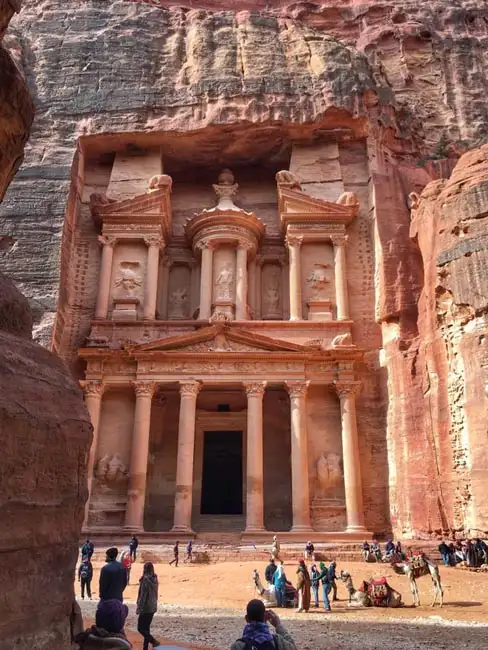
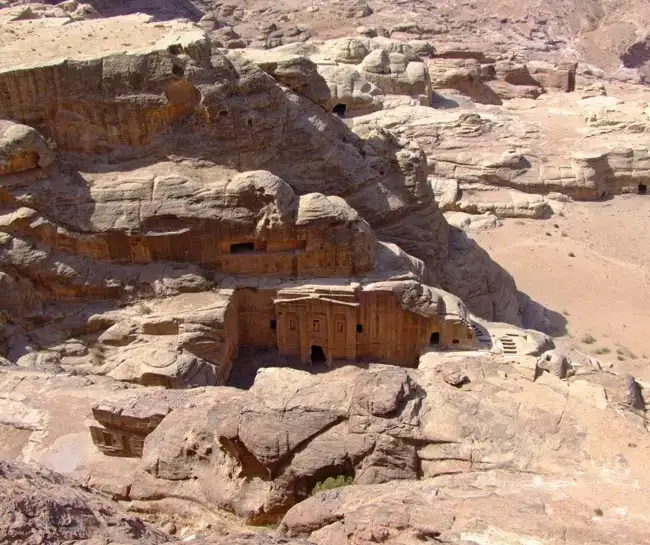
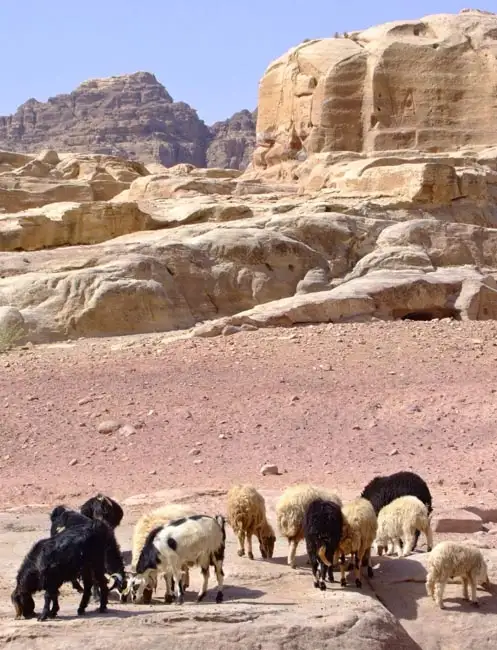
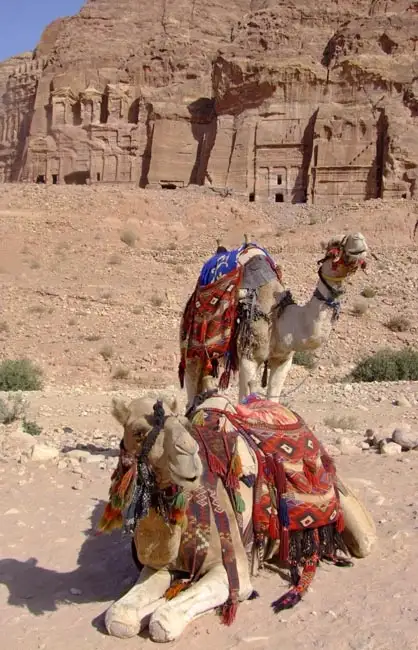
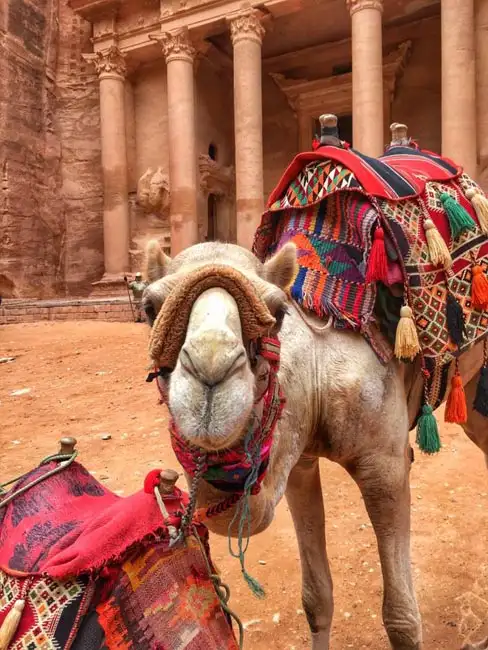
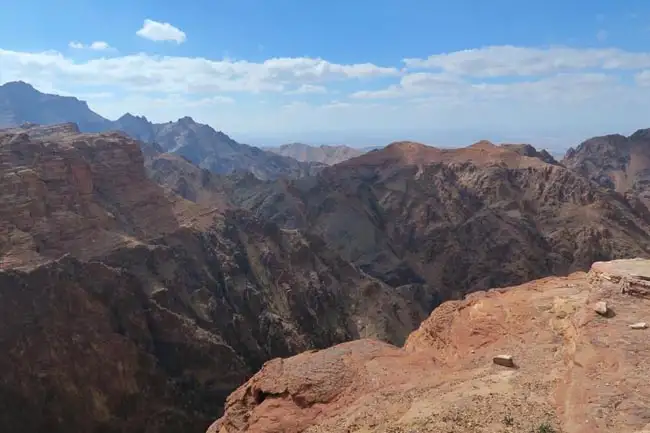
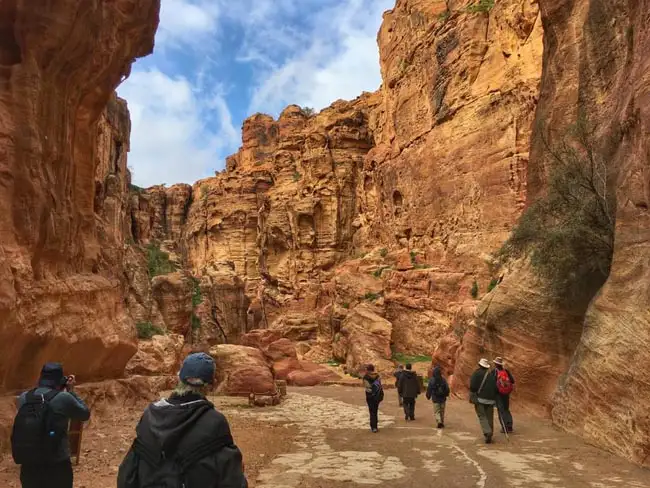
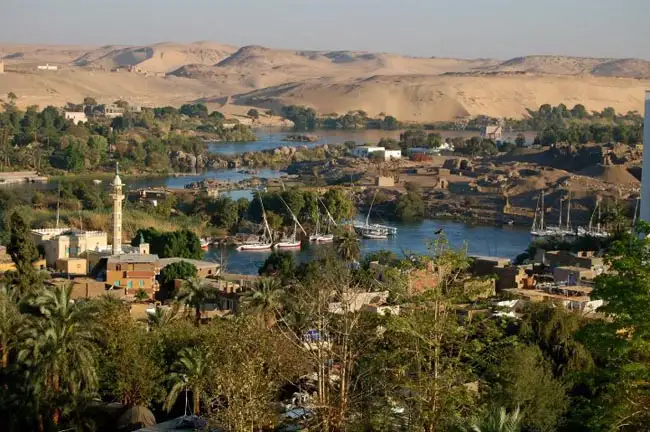
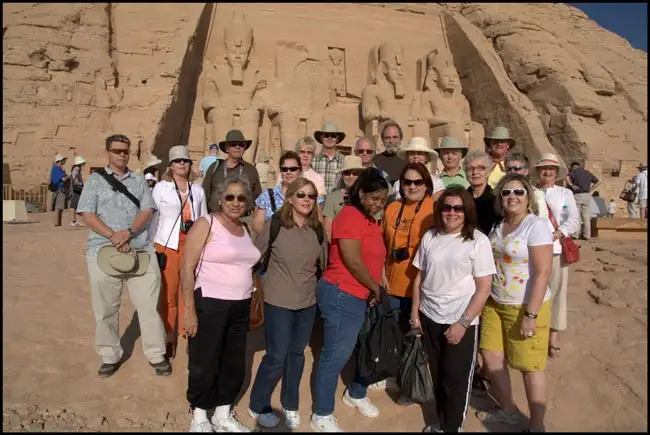

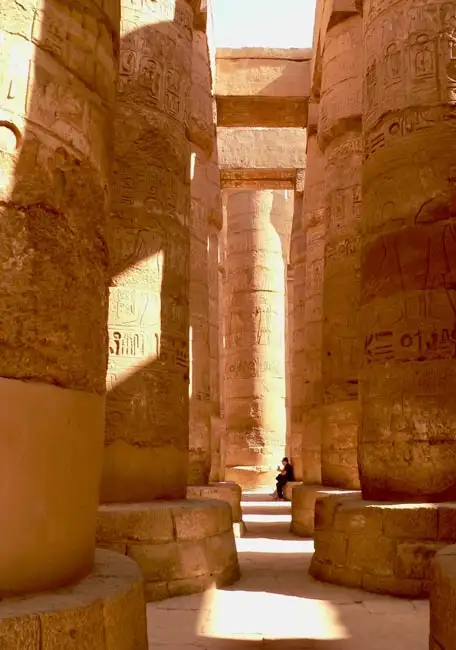
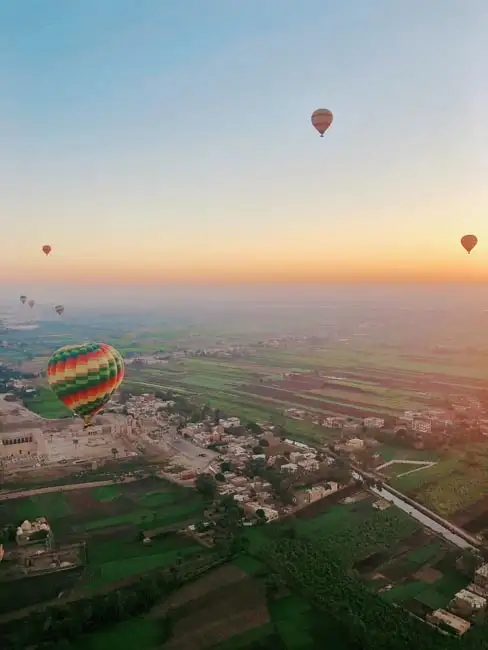
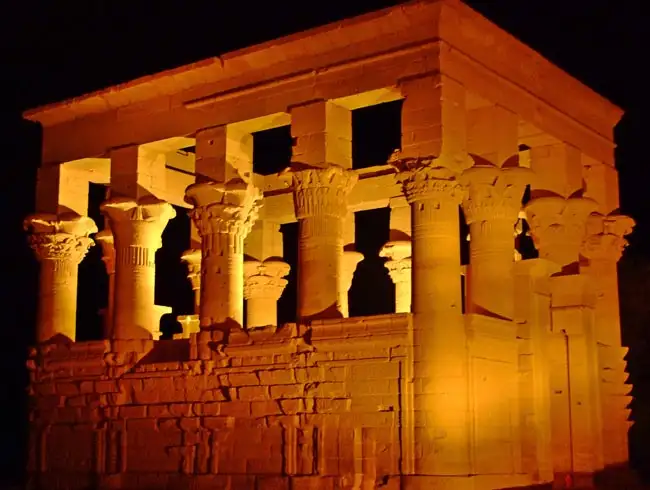
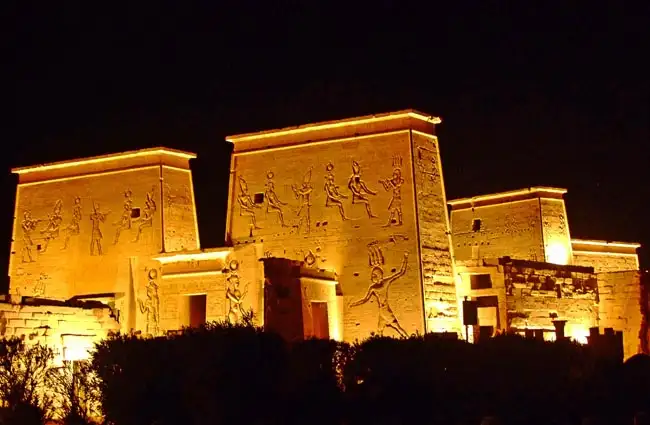
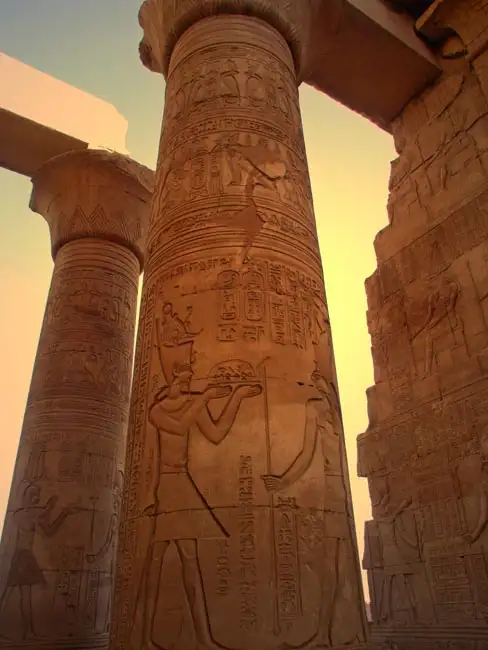
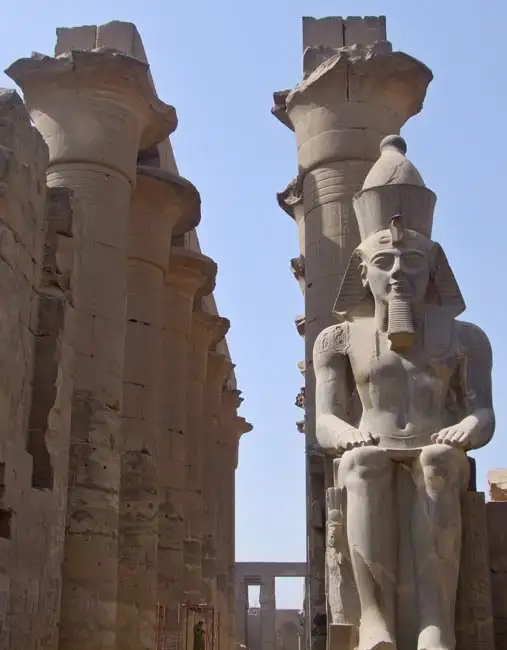
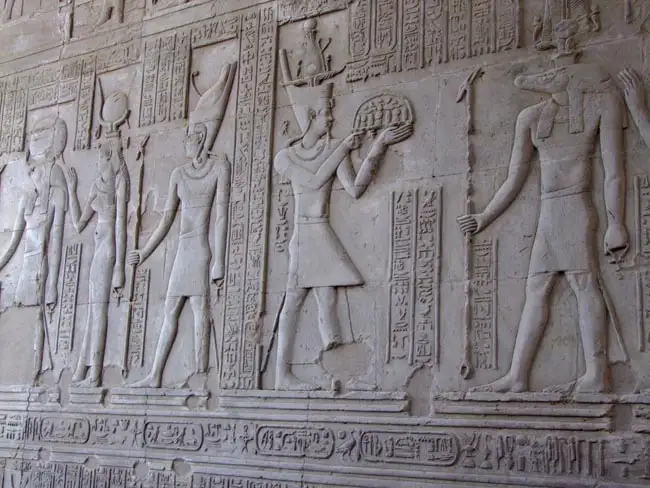
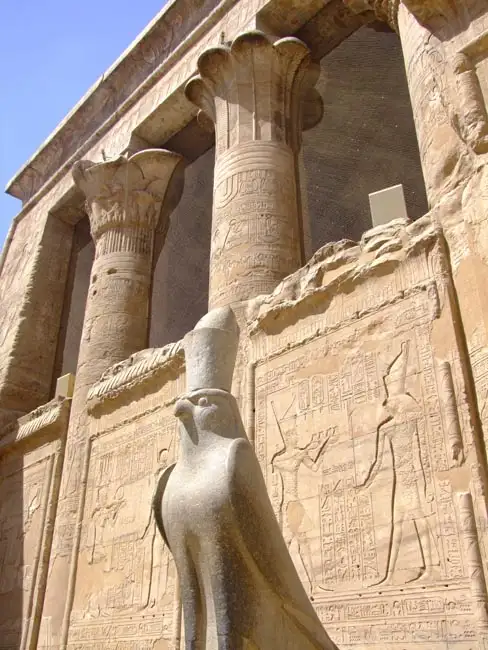
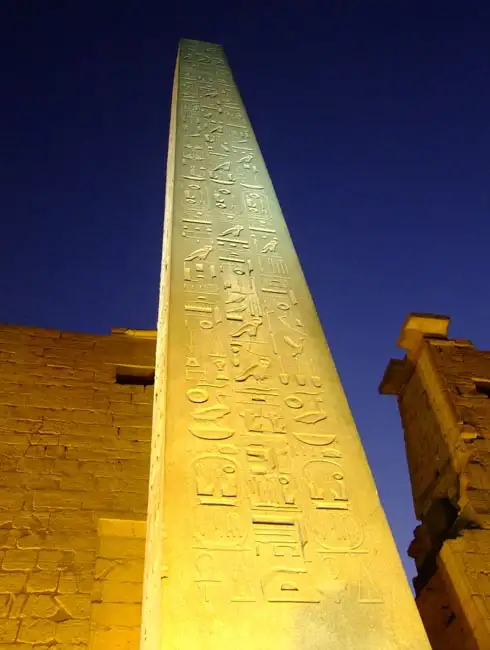
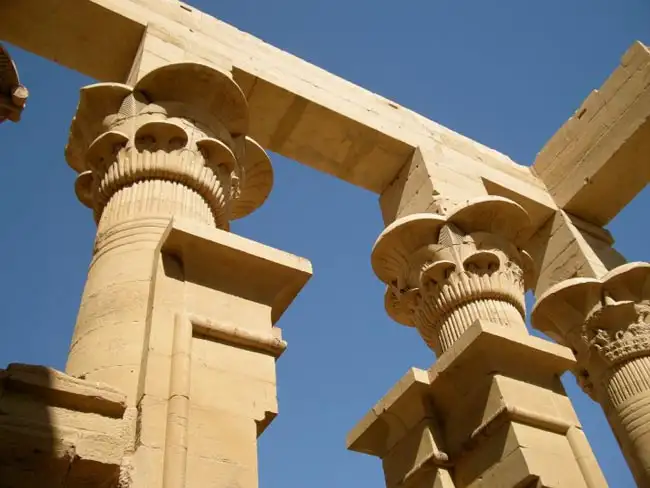
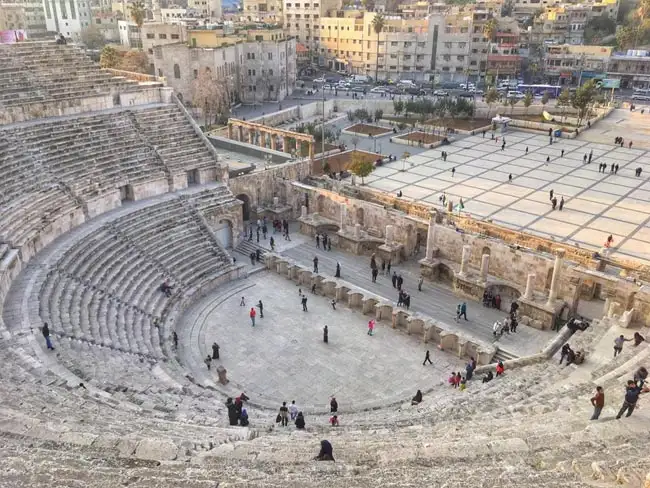
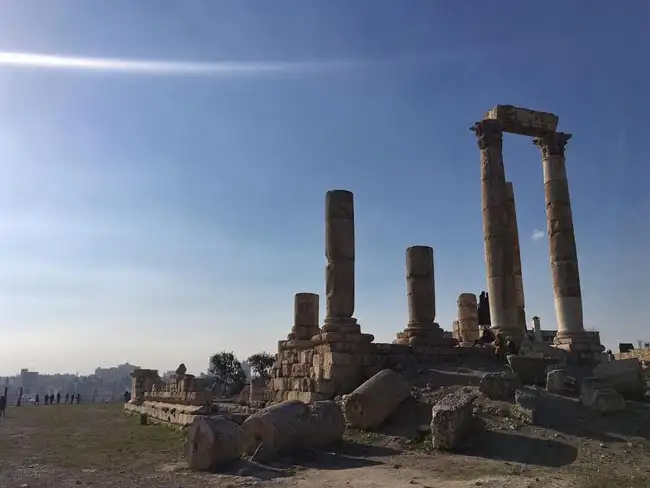
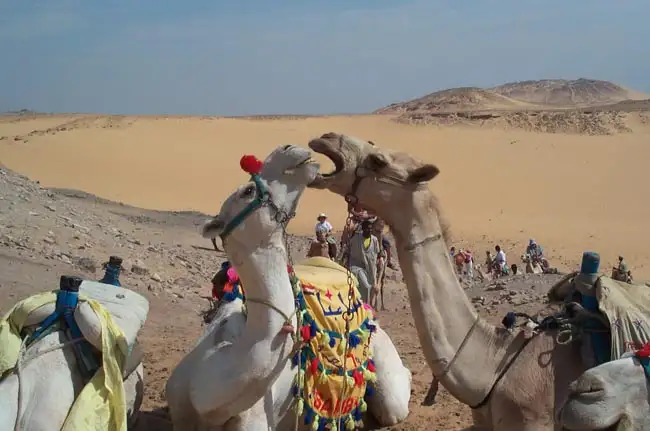
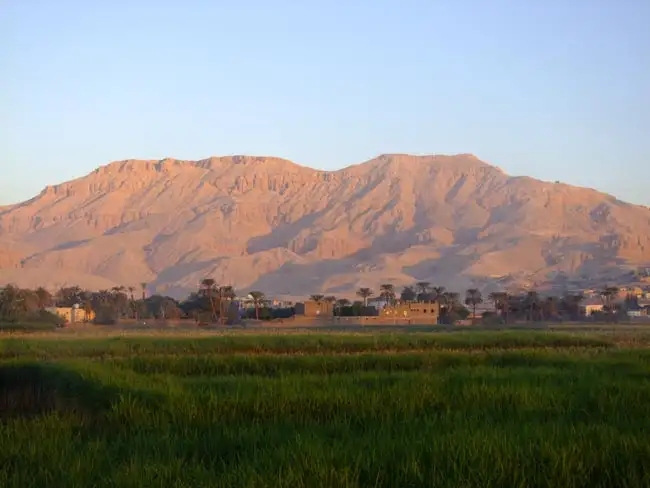
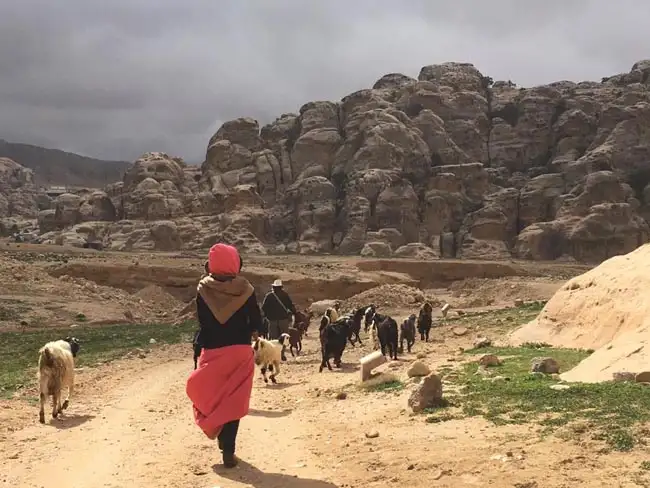
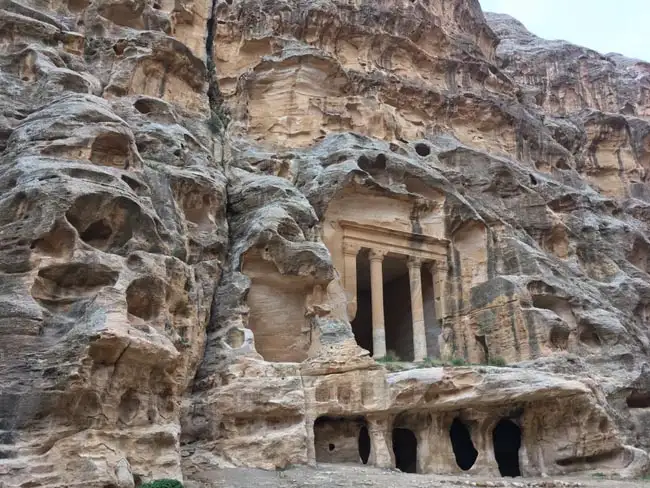
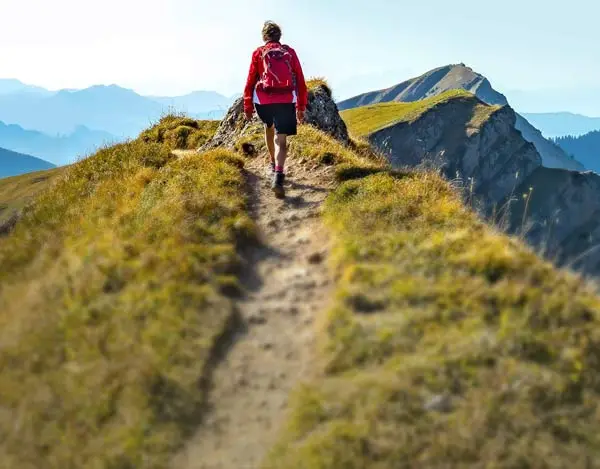
Book This Tour
- Final payment: Due 90 days prior to departure.
- Deposit: A non-refundable $500 USD Deposit is required at booking.
- Internal Flight Taxes: An extra $138 USD applies for taxes and fees on tour flights. The internal airfares are included, but taxes are listed separately as they may change. Exceptions are noted in Red.
- Optional Single Supplement: $2040 USD (number of singles limited).
(View options forsingle travellers) - Transfering Tour or Date: Transferring to another tour or tour date is only permissible outside of 120 days prior to departure and is subject to a $100 USD change fee.
(Read our cancellation policy)
Prices below are per person, twin-sharing costs in US Dollars (USD). Pricing does not include airfare to/from the tour and any applicable taxes.
Frequently Asked Questions
- What is the maximum number of participants on a trip?Most of our tours carry a maximum of 18 participants; some tours (ie hiking tours) top out at 16. In the event that we do not achieve our minimum complement by our 90-day deadline, we may offer group members the option of paying a "small-group surcharge" as an alternative to cancellation. If all group members agree, we will confirm the trip at existing numbers; this surcharge is refundable in the event that we ultimately achieve our regular minimum. If the small group surcharge is not accepted, we will offer a refund of your deposit or a different trip of your choice.
- Can I extend my tour either at the beginning or end? What about stopovers?Yes, you can extend your tour either at the beginning or the end and we can book accommodation in our tour hotel. Stopovers are often permitted, depending on air routing. Stopovers usually carry a "stopover" fee levied by the airline.
- How do I make a reservation? How and when do I pay?The easiest way to make a reservation is via our website; during office hours, you are also more than welcome to contact us by telephone.
A non-refundable deposit is payable at the time of booking; if a reservation is made within 90 days, full payment is required. Some trips require a larger deposit. If international airline bookings require a non-refundable payment in order to secure space or the lowest available fare, we will require an increase in deposit equal to the cost of the ticket(s).
Early enrolment is always encouraged as group size is limited and some trips require greater preparation time.
Once we have received your deposit, we will confirm your space and send you a confirmation package containing your trip itinerary, any visa/travel permit related documents, invoice, clothing and equipment recommendations, general information on your destination(s), and forms for you to complete, sign and return to us. Your air e-tickets (if applicable), final hotel list, final trip itinerary, and instructions on how to join your tour, will be sent approximately 2-3 weeks prior to departure. - What about cancellations, refunds, and transfers?Please review our cancellation policy page for details.
- I am a single who prefers my own room. What is a single supplement?All of our tours have a single supplement for those who want to be guaranteed their own room at each location.
This supplement is a reflection of the fact that most hotels around the world do not discount the regular twin-share rate for a room by 50% for only one person occupying a room. Most hotels will give a break on the price, but usually in the range of 25-30% of the twin-share rate. This difference, multiplied by each night, amounts to the single supplement.
The conventional amount can also vary from country to country and some destinations are more expensive than others for single occupancy. In order to be "single friendly," the supplements we apply are not a profit centre for us and we do our best to keep them as reasonable as possible.
On most tours we limit the number of singles available, not to be punitive, but rather because many hotels allow for only a limited number of singles; some smaller hotels at remote locations also have a limited number of single rooms available.
Please note that most single rooms around the world are smaller than twin-share rooms and will likely have only one bed. - Do you have a shared accommodation program?Yes! If you are single traveller and are willing to share, we will do our best to pair you with a same-gender roommate. Please note that should we fail to pair you, we will absorb the single supplement fee and you will default to a single room at no extra charge.
